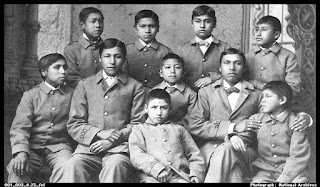This is the Tambov Province of Imperial Russia, circa 1822. What makes this remarkable, at least to me, is that this high-quality image is available online, easy to access and share. If curiosity took me to wonder how far apart villages described in police reports were from each other in the Tambov Province, I can now easily look this information up for myself using superb digital tools. Before finding these maps, I had to find an archive that contained a copy of the Russian atlas I needed (there were a few made during the Imperial period), then schedule time to actually visit the archive and then I had to sit down and either take pencil notes on paper or use my laptop to record my thoughts. Usually I could not even think of taking a picture for my own use and the reproduction fees could often be exorbitant enough to prohibit any more than a few copies to be made. Now- poof! - via the magic that is the Internet, I can download these images and make much more detailed observations in my own time.
 |
| Total EU Subsides |
 |
| 'Modernization' EU Subsidies |
This brings me back to what I'm dubbing the Digital Peasant Project, by which I mean a concerned effort to document all available written resources dealing with the life of Peasants. This is obviously a rather large field, so initial efforts could focus on well established records of, say, peasant disturbances noted in police or government reports as a starting point. There would need to be a standard of notation, so that many people could contribute their specific knowledge or documented sources, and an online wiki or other easily modifiable and shareable resource in order to allow coordination and collectivization of materials.
Once the data begins to be collected, a similar mapping project akin to the FishSubsidies project could be implemented giving the viewer an easy to read visual map of various peasant trends. Given enough data input one could dynamically view events such as peasant resistance to raising of labor obligations or the speed at which the post carried new edicts or news of foreign/domestic disputes. The map would incorporate the ability to turn on/off multiple layers of data and a researcher could specify specific parameters of search and then view those results develop over time, much like watching a weather forecast map on tv or the internet. This is the kind of power combining maps and databases of humanistic information could yield for future study. To be sure, projects of this computational scope have been undertaken before yet the internet brings magnitudes greater ability to share and allow others to contribute to the project.
This is new territory for me- I am woefully inadequate at visualizing, at all, the programming needs to make the Digital Peasant Project possible. But I do know about research and I have confidence that I could develop at least the beginnings of a standardization protocol for the potential data input. This is something I think has tremendous potential and I would love to hear what others think about the idea.












